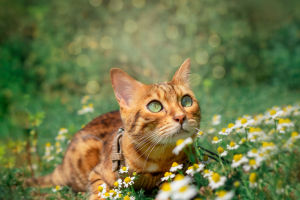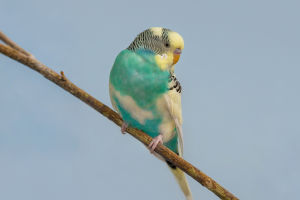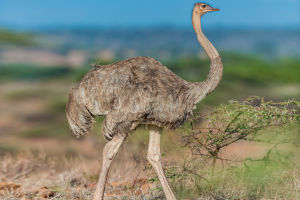We've all heard about tigers, right? The mighty big cats that rule the wild and strike fear into every other creature they encounter. Tigers have long been symbols of power, and their name even extends to other fierce animals.
Take, for instance, creatures like the gecko, scorpion, or flycatcher – all of which are named after the tiger due to their aggressive nature.
But today, Lykkers, we are going to meet a different kind of "tiger" – the Blue-Throated Bee-Eater! Despite its name, this bird is no tiger in terms of aggression.
Instead, it's a small, stunningly beautiful bird that has earned the title of one of China's most gorgeous creatures.
Every May, the Blue-Throated Bee-Eaters make their way to Dinghu Mountain to rest and refuel during their northward migration. This location serves as a crucial energy pit stop. Their presence here, as they fly and perch amidst the vibrant mountains and clear waters, creates a mesmerizing, almost magical scene that captivates all who witness it.
Graceful and Elegant: The Blue-Throated Bee-Eater's Appearance
The Blue-Throated Bee-Eater, scientifically known as Merops viridis, is a medium-sized bird, measuring between 26 to 28 centimeters in length. Its body boasts a colorful display: the head and upper back are a rich reddish-brown or chocolate color, while the wings shimmer with blue-green hues.
The lower body is a lighter shade of blue, and its long, needle-like tail feathers stand out, making it appear as though it's carrying a tiny kite in flight. Its long, slender, black beak is slightly curved, perfect for its hunting lifestyle. As its name suggests, it features a striking blue throat that adds to its distinct beauty.
Though its name carries the "tiger" moniker, this bird bears no resemblance to the fearsome tiger. Instead, the Blue-Throated Bee-Eater is delicate and graceful, especially when it soars through the air. In flight, it often traces graceful, wave-like patterns, enhancing its elegant, light appearance. Watching it is like watching a living work of art.
Hunting Like a Tiger: Precision and Skill
Despite its dainty appearance, the Blue-Throated Bee-Eater can hunt like a true predator. Its diet consists mainly of bees, dragonflies, butterflies, and other flying insects.
When hunting, it demonstrates skills that rival the sharpness of a tiger's claws. The bee-eater's slender body and sharp beak are designed for precision, and it's an expert in aerial acrobatics. It can fly at high speeds, making sharp turns, gliding, and even diving in pursuit of its prey.
It typically perches on a dry branch or an electric wire, waiting for an insect to fly by. Once it spots a target, it swoops down in a swift, calculated dive, catching its prey in mid-air. There's no escaping the reach of this hunter once it's locked onto its target.
But the Blue-Throated Bee-Eater's method of eating is quite interesting. For example, when it catches a bee, it doesn't just swallow it whole. Instead, the bird uses its perch to smack the bee, knocking out the sting or stunning it before consuming it. When eating butterflies, it will first knock the wings off before enjoying the meal. For dragonflies, it's all about precision – a few well-placed strikes, and it's ready to eat.
Family Life: Dedicated Parents and Courting Rituals
The Blue-Throated Bee-Eater is not only an impressive hunter but also a devoted partner and parent. During the mating season, which happens after the birds pair up, the male engages in a fascinating courtship ritual.
Rather than calling out to the female, the male performs a series of dance moves, showcasing his agility and grace in the air. Alternatively, he might offer a gift, such as a freshly caught butterfly or dragonfly, to impress the female. Once the female accepts the male's offering, it's a sign that she's ready to mate.
After mating, the couple works together to create a nest. They dig a hole in sandy soil, usually in a sunny, well-exposed area. Using their sharp beaks, they dig deep into the sand to create a burrow where they'll lay their eggs. The male and female then take turns keeping the nest clean and watching over their future chicks.
Parental Dedication: The Effort to Raise Their Young
June and July are crucial months for the Blue-Throated Bee-Eater, as these are the months when the parents are busiest, feeding their growing chicks.
With the increased demand for food from their young, the parents find themselves working harder than ever. The adults must catch more insects, and as the chicks grow, the food required becomes larger and more challenging to catch. This additional effort takes a toll on the parents, and by the end of the season, their once-vibrant feathers may begin to lose their luster.
Does this remind you of our own hardworking parents who often sacrifice their well-being for their children? These birds are true "model parents", always striving to ensure their offspring are well cared for.
Conclusion: A Magical Bird in Our Midst
So, Lykkers, the next time you think of a "tiger", remember that it's not always about fierce strength and power. Sometimes, it's about grace, beauty, and precision, as seen in the Blue-Throated Bee-Eater.
This stunning bird, with its vibrant colors and remarkable hunting skills, is a true testament to nature's ability to surprise and awe us. We may not see it every day, but if you ever find yourself in the right place at the right time, you might just catch a glimpse of this magical creature soaring through the sky.


